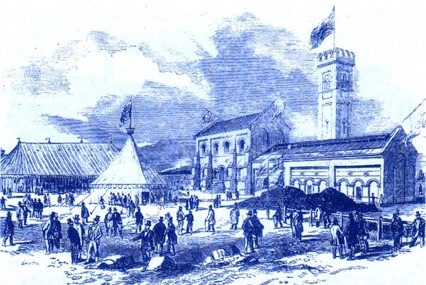In the bustling streets of Victorian London, a group of unlikely heroes emerged, challenging societal norms and revolutionizing the city’s water supply. These heroes were none other than the courageous and determined Victorian women who played a pivotal role in improving public health and sanitation. In this article, we will delve into the remarkable contributions of these women and explore how their efforts transformed the landscape of London’s water infrastructure.
The State of London’s Water Supply
During the 19th century, London faced numerous challenges when it came to its water supply. The rapid population growth, coupled with inadequate infrastructure, resulted in a dire situation for the city’s residents. The existing water sources, such as the River Thames and shallow wells, were highly contaminated, leading to the spread of waterborne diseases like cholera and typhoid.
The Rise of the Victorian Women
Amidst this crisis, Victorian women stepped forward to address the pressing issue of clean water supply. Despite the prevalent gender biases and societal restrictions, they played a crucial role in spearheading initiatives aimed at improving public health and sanitation.
The Sanitary Movement
One of the key movements that emerged during this period was the Sanitary Movement, led by influential women such as Florence Nightingale and Octavia Hill. These women recognized the urgent need for comprehensive reforms in London’s water supply system and worked tirelessly to raise awareness and advocate for change.
Florence Nightingale’s Impact
Florence Nightingale, known for her pioneering work in nursing, also made significant contributions to the improvement of London’s water supply. She conducted extensive research and analysis on the correlation between poor sanitation and disease outbreaks, highlighting the need for clean water as a fundamental aspect of public health.
The Great Stink and the Cleansing of the Thames
The “Great Stink” of 1858 served as a turning point in London’s water supply history. The unbearable stench emanating from the heavily polluted River Thames prompted the government to take action. The Metropolitan Board of Works was established, and a comprehensive plan was devised to cleanse the river and enhance the city’s sewage system.
Women in the Workforce
As the demand for improved water infrastructure grew, Victorian women found new opportunities in the expanding workforce. Many women joined the ranks of engineers, chemists, and water treatment specialists, bringing their unique perspectives and expertise to the field. Their contributions were instrumental in the development and implementation of innovative solutions.
The Legacy of Victorian Women
The relentless efforts of Victorian women in revolutionizing London’s water supply left a lasting impact on public health and sanitation. Their advocacy, research, and practical contributions paved the way for significant improvements in water quality, reducing the prevalence of waterborne diseases and improving the overall well-being of the city’s inhabitants.
Conclusion
In conclusion, the remarkable achievements of Victorian women in revolutionizing London’s water supply cannot be overstated. Their unwavering determination and commitment to public health played a pivotal role in transforming the city’s water infrastructure. Today, we owe a debt of gratitude to these unsung heroes who defied societal norms and left an indelible mark on the history of sanitation. As we reflect on their accomplishments, let us draw inspiration from their legacy and work towards creating a healthier and more sustainable future for all.
